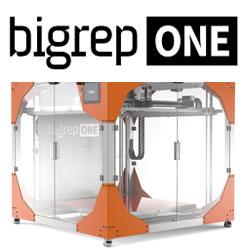“Building for the Surge: How to Prepare Your Factory Storage for Times of Peak Demandâ€
.jpg)
Every manufacturer and warehouse operator knows the feeling - when the calendar edges toward the holiday season, or when a new product launch is suddenly upon you - everything speeds up. Orders multiply, production schedules tighten, and what once felt like a spacious facility suddenly feels constrained. Surges brought upon by seasonal pressures, product launches or even the need to stockpile materials due to economic pressures can strain even the best-run operations, pushing people, equipment, and available space to their limits.
But the solution isn’t just more labor or longer shifts. To truly manage seasonal peaks efficiently and safely, facilities need a storage infrastructure designed to flex with changes in demand, regardless of whether they’re seasonal, planned, or one-time occurrences.
The right racking and layout strategy can turn a seasonal scramble into a smooth, predictable cycle, while yielding year-round benefits in productivity and safety.
Optimize Inventory Management Before the Rush
The most common example of a time of peak demand is the annual holiday season. Whether your facility is producing products given as gifts, holiday-themed decorations, or materials used more extensively during this timeframe, the rush to produce and get more to market as fast as possible can become a real challenge. When seasonal orders climb, inventory levels can swell overnight. Pallets and parts start crowding aisles, slowing processes and increasing the risk of injury or error.
The key to avoiding that chaos is proactive inventory planning, paired with an adaptable racking system.
Industrial steel racks, especially modular systems that can be reconfigured safely and quickly, allow teams to make the most of every cubic foot of space. By planning vertical storage zones and using racks that safely support full load utilization, facilities can store more inventory as needed, without having to expand their footprint, make unsafe choices, or find other locations to store materials.
Organization is equally important. Clearly defined locations for needed, in-use materials, combined with visual labeling and standardized setups, make it easier to find things quickly. During peak times, every minute counts, and a logical, accessible layout can keep operations running at a fast pace.
Design for Fast, Flexible Workforce Training
An increase in demand due to the holidays or because of a new launch often means bringing in temporary workers, and the time for training them is limited. A well-designed racking and storage layout can dramatically shorten the learning curve.
Straightforward labeling, consistent aisle widths, and clear product groupings help new team members learn the system intuitively. When racking is engineered for accessibility, providing safe reach zones and ergonomic heights, workers can move confidently, even on their first day.
The most effective facilities pair this physical organization with concise safety training. When employees can see how storage systems are meant to function - where to walk, where to pick, where not to climb - the lessons stick faster. That’s especially valuable when temporary staff may only be on site for a few weeks.
Prioritize Safety When Operations Accelerate
Times of rapidly increasing activity don’t just speed up output; they also heighten risk. Forklifts move faster, workers stretch further, and the pressure to meet deadlines can lead to shortcuts. Investing in durable, high-capacity racking built for industrial environments helps prevent accidents before they start.
Strong steel construction, anti-tip mechanisms, and stabilizing supports can protect both workers and products during hectic periods. Equally critical is engineering for unbalanced picking - i.e., when workers remove items from one side of a rack more often than the other, shifting weight distribution. Racks that maintain stability under uneven loads provide peace of mind that safety won’t be compromised in the rush.
Regular inspections are also essential. Checking welds, anchors, and connections before the busy season ensures that small maintenance issues don’t become costly breakdowns when the warehouse is at full tilt.
Build In Adaptability
Product mixes and packaging sizes can change quickly during the holiday season. One month you might be handling lighterweight goods; the next, bulky pallets, heavy tools, or raw materials. Modular racking systems make it possible to adjust beam levels and bay widths without replacing entire units.
This adaptability not only helps manage seasonal variety, but it can also be an important ally when a company needs to “stock up” on an item in anticipation of increasing demand or in response to an oncoming economic issue, such as tariffs.
Pairing adaptable storage with proactive planning can help keep a facility layout efficient year-round. When demand ebbs, racks can be adjusted to accommodate off-season inventory or used for staging new product lines. There may be machine tools that are only used at a certain time of year that can be put out of reach for the next several months. There may be only a single type of material that needs to be stocked up for future use. The ability to reconfigure storage on demand prevents the “set it and forget it” mindset that often leaves valuable space underused.
That said, preparing for a time of surge isn’t just about surviving a few intense weeks. Facilities that are designed with scalability in mind gain long-term resilience. Flexible racking, thoughtful layout planning, and safety-first engineering all contribute to a more agile operation - one that can respond to changing customer needs or unexpected supply chain disruptions without missing a beat. Facilities that address a seasonal surge even once will find themselves better prepared for the next big product launch to come at them in the future.
A time of surging production will always bring its share of stress, but it can serve as a testing ground for continuous improvement. Operations teams that analyze what worked and what didn’t during peak demand can even further refine their layouts, update training protocols, and fine-tune storage practices for the next cycle.
Where to Start
It’s never too late to start improving. Begin by assessing how your current storage supports your people, your products, and your pace of work - during both busy and downtime periods. Then use that information to find where there are issues, or at least where there are areas that could be improved upon. With some forethought and timely analysis, peak season prep can actually one day become a competitive advantage.

Blake Peebles is a veteran sales engineer with over a decade of experience driving B2B growth in the industrial storage and workspace solutions sector. Known for his ability to build strong dealer networks, he has consistently exceeded revenue goals across multi-state territories. Currently at Dexco, Blake supports customers and dealers across the Midwest, combining technical expertise with hands-on support. A former “salesperson of the year” at Burroughs Corporation, he has a strong track record of increasing sales, launching new products, and leading customer-focused innovation.
Featured Product

